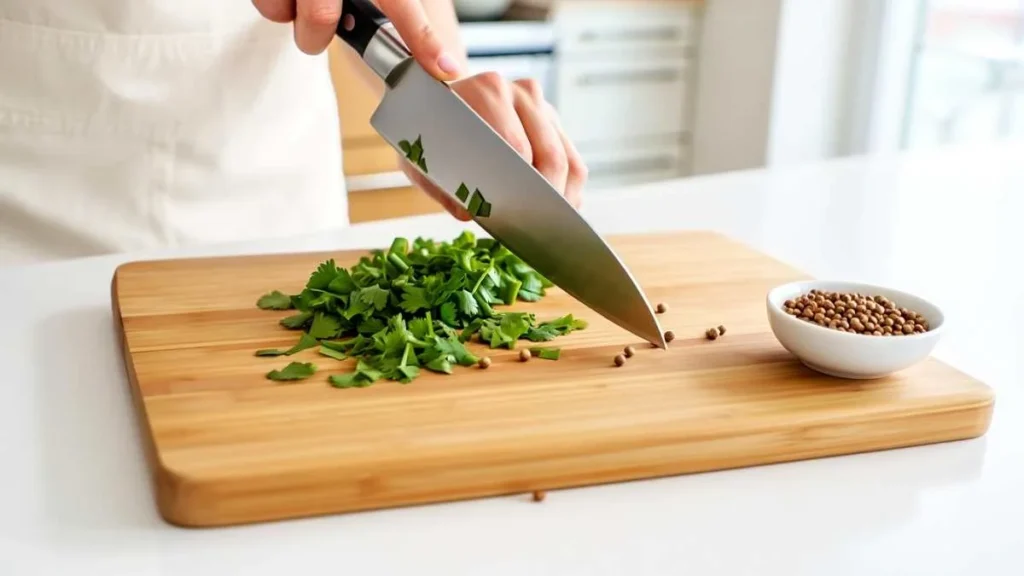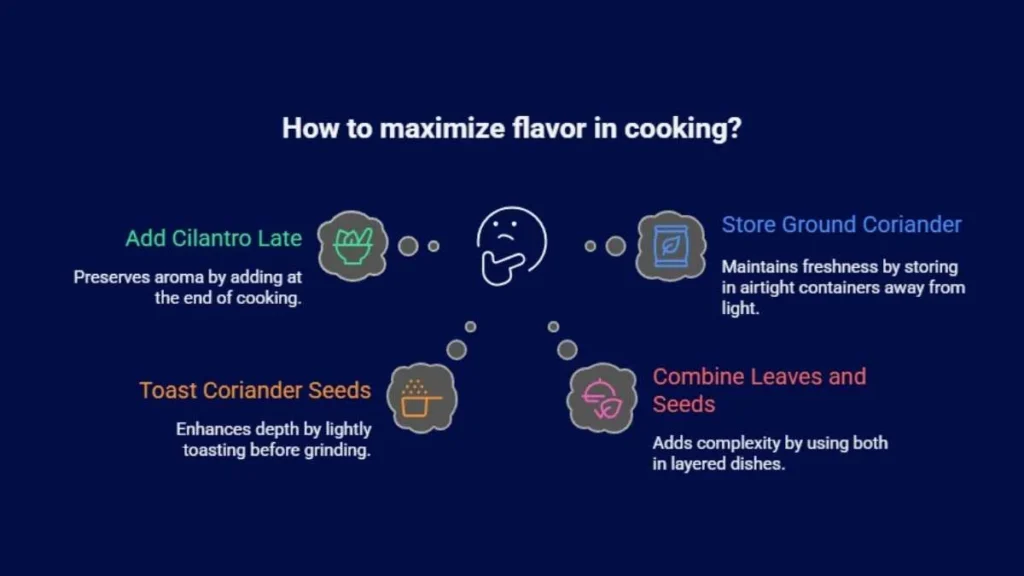Koriandri, traditionally known as coriander (Coriandrum sativum), is a fragrant, versatile herb and spice that has been cherished for centuries across various cuisines, medicinal uses, and cultures worldwide. What makes it truly unique is its rare dual identity; its fresh leaves are known as cilantro, widely used for their bright, citrusy freshness, while its dried seeds are known as coriander, prized for their warm, nutty, and slightly sweet flavor. This dual nature allows one plant to play two very different yet equally important culinary roles in global food traditions. Beyond its taste, Koriandri is deeply intertwined with history, health practices, agriculture, and cultural symbolism, making it one of the most significant botanicals in human civilization.
- Historical and Cultural Legacy
- The Unique Dual Role: Leaves vs. Seeds
- Nutritional Powerhouse
- Health Benefits Backed by Traditional Medicine and Modern Science
- Flavor Pairings
- Preservation Methods
- Allergies and Considerations
- Quick Comparison of Coriander Seeds and Cilantro
- Uses of Koriandri
- Expert Tips for Maximizing Flavor
- Conclusion
Historical and Cultural Legacy
The use of Koriandri dates back more than 7,000 years. Archaeological evidence of coriander seeds has been found in ancient Egyptian tombs, including that of King Tutankhamun. Ancient Greeks and Romans used it as both a culinary spice and a preservative in wine. In Sanskrit texts and Ayurveda, coriander is described as a cooling herb that balances the body’s heat.
Over time, Koriandri spread across Asia, the Middle East, Europe, Africa, and the Americas through trade routes such as the Silk Road. Each culture adapted it, giving it different names: cilantro in Spanish, dhania in Hindi and Urdu, koriander in German, and coentro in Portuguese. Today, it holds a permanent place in kitchens from Mexico to India, from Thailand to Morocco.
The Unique Dual Role: Leaves vs. Seeds
One of the most fascinating aspects of Koriandri is that it offers two completely different flavors and uses from the same plant.

1. Cilantro (Fresh Leaves)
- Flavor: Bright, citrusy, slightly peppery
- Used in: Salsas, chutneys, salads, soups, curries, and toppings
- Culinary role: Adds freshness and aroma at the end of cooking or as a garnish
2. Coriander (Dried Seeds)
- Flavor: Warm, nutty, slightly sweet with citrus undertones
- Used in: Spice blends (garam masala, ras el hanout), pickles, curries, sausages, baked goods
- Culinary role: Adds depth, warmth, and complexity; used whole, crushed, or ground
This duality makes Koriandri one of the few plants in the culinary world where both leaves and seeds are equally valued for completely different purposes.
Nutritional Powerhouse
Though delicate in appearance, Koriandri is rich in nutrients. Cilantro leaves provide vitamins, while coriander seeds offer minerals and healthy oils.
- Rich in vitamin K, essential for bone health and blood clotting
- Contains vitamin A and C
- Provides antioxidants like quercetin
- Low in calories and carbs
Health Benefits Backed by Traditional Medicine and Modern Science
For centuries, Koriandri has been used in Ayurveda, Traditional Chinese Medicine (TCM), and Greco-Arab (Unani) medicine. Modern research supports many of its traditional uses.
1. Digestive Support
Coriander seeds help relieve indigestion, reduce bloating, and promote enzyme secretion. Many cultures serve coriander-infused water after meals.
2. Anti-Inflammatory and Antioxidant Properties
Compounds like linalool in both leaves and seeds help fight inflammation and oxidative stress.
3. Blood Sugar Regulation
Studies indicate coriander seeds may help lower blood glucose levels, making them useful for diabetes management.
4. Heart Health
High magnesium and potassium levels in seeds support healthy blood pressure.
5. Detoxification
Cilantro is believed to help bind and remove heavy metals from the body.
Flavor Pairings
Cilantro pairs well with Lime, chili, tomato, avocado, onions, and garlic. Coriander seeds pair well with cumin, fennel, cinnamon, cardamom, cloves, and pepper. Both work harmoniously in layered spice profiles and complex dishes.
Preservation Methods
For Cilantro Leaves, Refrigeration with moisture control. Freezing or making herb pastes works too. Drying is less common due to flavor loss. And for Coriander Seeds, air-drying post-harvest. Storing whole seeds for maximum shelf life. Grinding only when needed to preserve aroma.
Allergies and Considerations
While generally safe, some people experience:
- Cilantro aversion (due to genetic sensitivity to aldehydes, tastes like soap)
- Mild allergic reactions (rare)
- Photosensitivity (in extreme exposure)
Responsible consumption and awareness ensure safety.
Quick Comparison of Coriander Seeds and Cilantro
| Feature | Cilantro (Leaves) | Coriander (Seeds) |
| Flavor | Citrus, bright | Warm, nutty |
| Use | Fresh, garnish | Cooking, spice blends |
| Nutrition | Vitamins A, C, and K | Fiber, minerals |
| Shelf Life | Short | Long |
Uses of Koriandri
1. Linalool contributes to warm, floral scents.
2. Coriander extracts are used in skincare and soaps.
3. Used as a companion plant for pest control and pollination.
4. Seeds flavor beer (e.g., Belgian Witbier) and herbal teas.
Expert Tips for Maximizing Flavor
- Add cilantro at the end of cooking to preserve aroma.
- Toast coriander seeds lightly before grinding for enhanced depth.
- Combine both leaves and seeds in layered dishes for complexity.
- Store ground coriander in airtight containers away from light.

Conclusion
Koriandri, or coriander, stands as one of the most remarkable plants in human history. Its dual identity, cilantro leaves offering fresh, zesty brightness and coriander seeds delivering deep, warm complexity, makes it indispensable in global gastronomy. Beyond taste, it contributes to health through its rich nutrient profile, medicinal properties, and detoxifying abilities. Culturally, it connects ancient traditions with modern culinary arts. Agriculturally, it supports sustainability and biodiversity.
Koriandri continues to shape our plates, our health, and our heritage, and its legacy is far from over.








